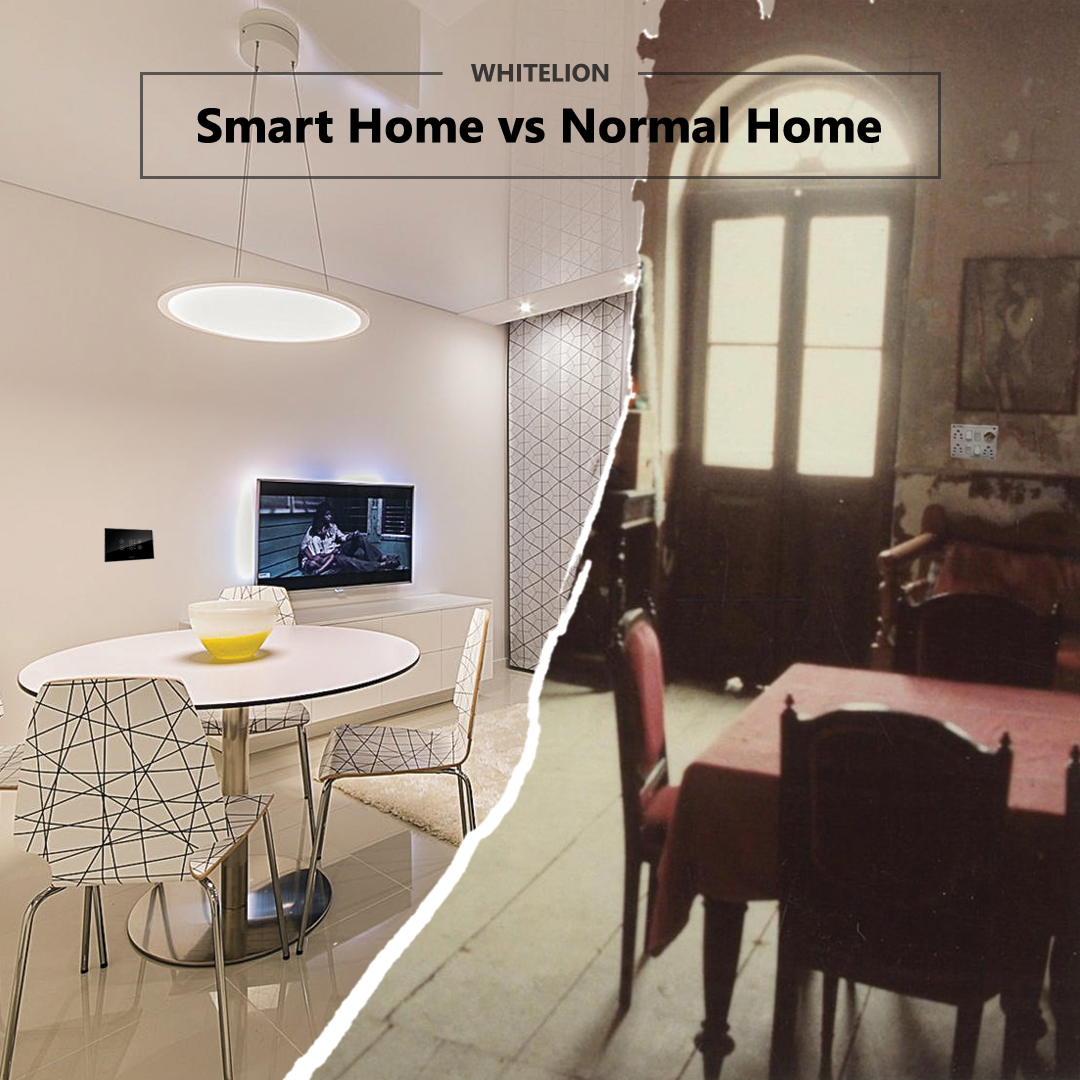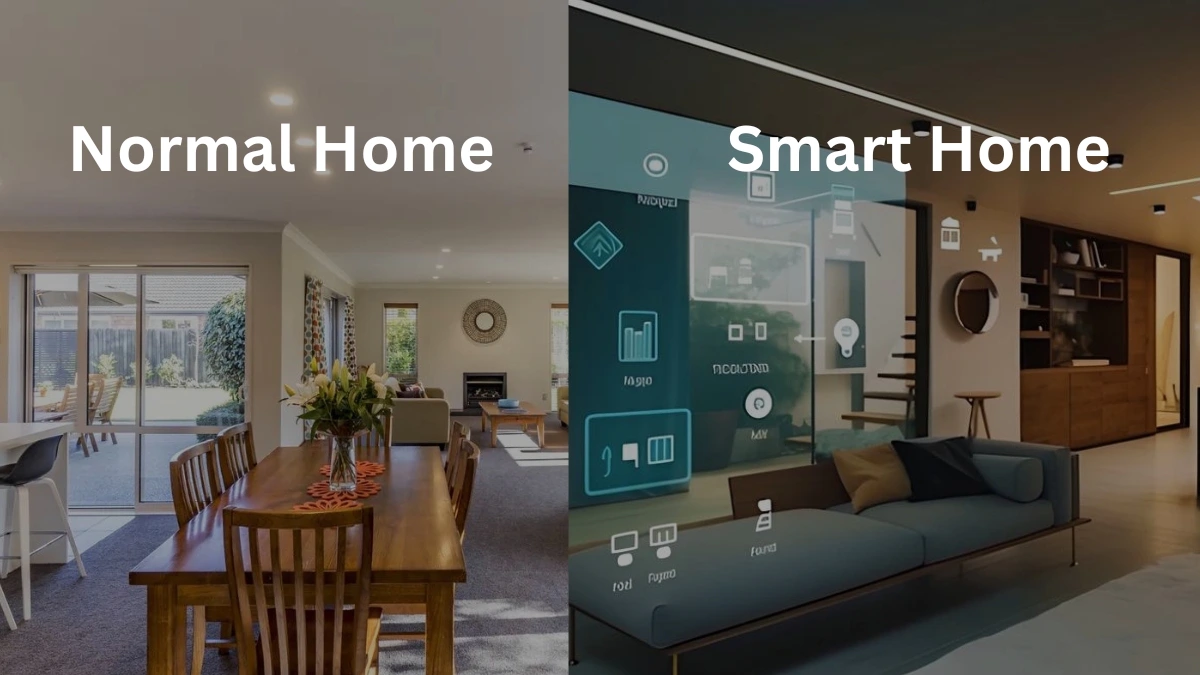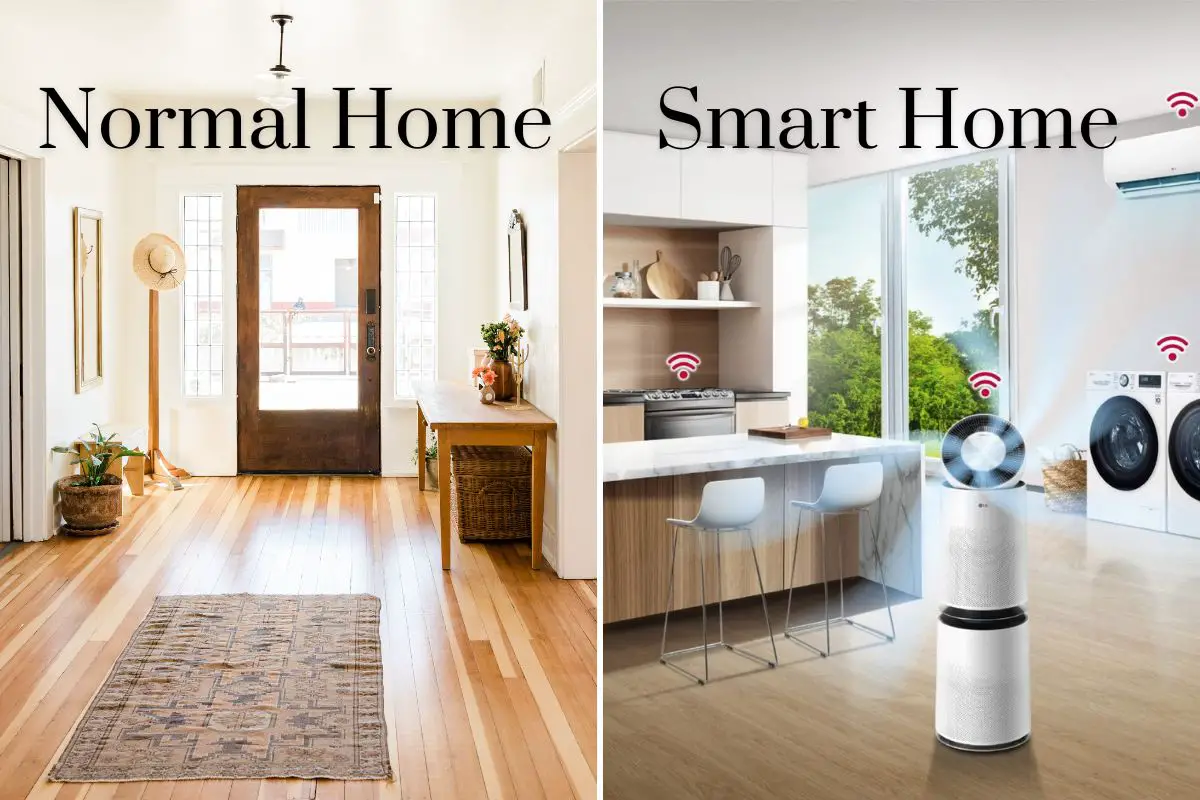A normal home operates with traditional systems, while a smart home uses connected devices for automation and control. Smart homes offer advanced features like remote monitoring, energy efficiency, and enhanced security.
These homes utilize IoT technology to enable seamless integration and communication between various devices, providing convenience and customization for homeowners. From controlling appliances with voice commands to adjusting lighting and temperature remotely, smart homes offer a futuristic and efficient living experience.
With the ability to automate tasks and analyze usage patterns, smart homes optimize comfort and convenience while reducing energy consumption and costs. As technology continues to advance, smart homes are becoming increasingly accessible and affordable, offering an array of benefits for modern homeowners.
Introduction To Home Automation
Discover the contrast between a conventional residence and a smart home. Smart homes offer automated control over appliances and security systems. Normal homes lack this advanced technology, making smart homes more efficient and convenient.
The Concept Of A Smart Home
A smart home is a residence that uses internet-connected devices to enable the remote monitoring and management of appliances and systems, such as lighting and heating. These connected devices can be accessed and controlled from a smartphone or other internet-connected device. The concept of a smart home is centered around convenience, energy efficiency, and enhanced security.
Evolution From Traditional To High-tech Living
Traditional homes rely on manual operation of various systems and appliances, while smart homes utilize automation and technology to streamline daily tasks. The evolution from traditional to high-tech living involves the integration of smart devices and systems to create a more interconnected and efficient living space. This transition allows for greater control and customization of home environments.

Credit: niravdholiya93.medium.com
Key Features Of Traditional Homes
Traditional homes typically feature classic architectural designs and conventional building materials, while smart homes are equipped with advanced technology for automated control and monitoring. Normal homes rely on manual operation for appliances and security, whereas smart homes incorporate interconnected devices and remote accessibility for enhanced convenience and energy efficiency.
Basic Structural Elements
A traditional home comprises standard structural components like walls, roof, windows, and doors.
Manual Control Over Home Systems
In a typical home, residents manually operate systems such as lighting, heating, and security.
Traditional homes are built with basic structural elements like walls, roof, windows, and doors. Residents manually control systems such as lighting, heating, and security.
Defining The Smart Home
A smart home is equipped with devices that can be controlled remotely, offering convenience and energy efficiency. Unlike a normal home, a smart home integrates technology to automate tasks and enhance security, comfort, and convenience for the residents. Smart homes utilize interconnected devices to provide a more efficient and convenient living experience.
Smart homes are the future of home automation, offering convenience, security, and energy-saving benefits. A smart home is a residential property that uses advanced technology to automate home functions and make daily living easier. The integration of internet of things (IoT) devices and automated systems and appliances is what sets a smart home apart from a normal home. In this article, we’ll explore the key differences between a normal home and a smart home, focusing on IoT integration and automated systems and appliances.Internet Of Things (iot) Integration
The internet of things (IoT) refers to the interconnectivity of devices and appliances over the internet. Smart homes use IoT technology to connect various devices and systems, providing homeowners with remote control and automation capabilities. IoT integration allows homeowners to control smart home devices, such as thermostats, lighting, and security systems, from their smartphone or tablet. Additionally, IoT devices can communicate with each other, enabling automated routines and improved energy efficiency.Automated Systems And Appliances
Automated systems and appliances are a key feature of smart homes. These devices use sensors and programming to automate tasks and make daily living more convenient. For example, smart thermostats can learn a homeowner’s temperature preferences and automatically adjust the temperature accordingly. Similarly, smart lighting systems can be programmed to turn on and off at specific times, or in response to motion sensors. Smart appliances, such as refrigerators and washing machines, can also be automated to optimize energy usage and improve convenience. In conclusion, smart homes offer a range of benefits compared to normal homes, including IoT integration and automated systems and appliances. By leveraging the power of technology, homeowners can enjoy increased convenience, security, and energy efficiency in their daily lives.Comparing Convenience And Efficiency
Ease Of Access In Smart Homes
Smart homes offer unparalleled convenience through seamless integration of devices, enabling users to control various aspects of their home with a simple voice command or tap on a smartphone. From adjusting the thermostat to turning off lights, smart homes streamline daily tasks, providing an effortless living experience.
Energy Management In Modern Living
Efficiency is a hallmark of smart homes, with energy management systems optimizing consumption and reducing waste. Through smart sensors and automated controls, smart homes minimize energy usage, leading to cost savings and environmental benefits.
Security Aspects: Smart Vs. Traditional
Security is a primary concern for homeowners, and the difference between a normal home and a smart home is particularly evident in this aspect. Let’s explore the security features of smart homes compared to traditional homes.
Enhanced Surveillance Features
Smart homes are equipped with advanced surveillance technology, including motion-sensing cameras, smart doorbells, and integrated security systems. These devices provide real-time monitoring and alerts, ensuring comprehensive protection for the property.
Remote Monitoring Capabilities
Unlike traditional homes, smart homes offer the convenience of remote monitoring. Homeowners can access live camera feeds and receive security alerts from anywhere using their smartphones or other connected devices.
Cost Implications
In terms of cost implications, the main difference between a normal home and a smart home lies in the initial investment required for smart technology integration. While a normal home typically has lower upfront costs, smart home features can incur higher expenses due to the advanced technology involved.
When it comes to home automation, the cost implications are one of the biggest concerns for most homeowners. While a normal home setup may require minimal investment, a smart home system can be significantly more expensive. However, it is important to understand that the initial investment in technology is just one aspect of the overall cost implications associated with smart homes.Initial Investment In Technology
A smart home requires a significant investment in technology, including hardware and software components such as smart lights, smart thermostats, and smart security systems. The cost of these components can add up quickly, with some systems costing several thousand dollars. However, the initial investment in technology can be offset by the long-term savings and value that a smart home provides.Long-term Savings And Value
While the initial investment in technology for a smart home may be high, the long-term savings and value can make it a worthwhile investment. For example, a smart thermostat can reduce energy consumption and lower utility bills over time. Similarly, a smart security system can potentially lower insurance premiums and provide peace of mind. Additionally, smart home technology can increase the resale value of a property, making it a smart investment in the long run. In conclusion, while the cost implications of a smart home may be higher than a normal home setup, the long-term savings and value can make it a worthwhile investment. With the ability to save energy, increase security, and enhance convenience, a smart home is a modern solution for homeowners looking to improve their home’s functionality and value.Adaptability And User Experience
Discover the contrast between a conventional home and a smart home lies in adaptability and user experience. Smart homes offer advanced automation and control, enhancing convenience and efficiency. Adaptability in smart homes allows for personalized experiences tailored to individual preferences.
Personalization Of Living Spaces
In a smart home, personalization is key to creating a unique living experience. Users can customize settings to match their preferences.Learning Curves And Accessibility
Accessibility in smart homes is designed for easy use, reducing learning curves for users. The technology is intuitive and user-friendly.
Credit: qomra.ae
Future Trends In Home Living
Advancements In Smart Home Tech
The future of home living is being shaped by the rapid advancements in smart home technology. From voice-activated assistants to connected appliances, smart homes are becoming more intuitive and automated, enhancing the overall living experience.
Integration With Renewable Energy Sources
Smart homes are also embracing the trend of integrating with renewable energy sources. Through the use of solar panels, energy-efficient lighting, and smart thermostats, homeowners can reduce their carbon footprint and lower their energy costs.
Making The Choice: Which Home Is Right For You?
Making the Choice: Which Home is Right for You?
Assessing Lifestyle And Needs
Consider daily habits and requirements to determine the ideal home environment.
- Normal Home: Traditional setup with basic functionalities.
- Smart Home: Automated systems for convenience and efficiency.
The Balance Between Tradition And Innovation
Weigh the benefits of conventional living versus modern technological advancements.
- Normal Home: Emphasizes simplicity and manual operation.
- Smart Home: Integrates cutting-edge technology for enhanced living experience.
Each home type offers unique features, so choose based on your preferences and lifestyle.

Credit: www.youtube.com
Frequently Asked Questions
How Are Smart Homes Different From Traditional Homes?
Smart homes differ from traditional ones through integrated technology, offering automation and control over various systems. This includes lighting, heating, security, and entertainment. Smart homes provide convenience, energy efficiency, and enhanced security through interconnected devices and remote access.
What Qualifies A Home As A Smart Home?
A smart home is qualified by devices connected to the internet for remote monitoring and control.
Is It Worth Having A Smart Home?
Yes, having a smart home is worth it. It can improve your daily life by making tasks easier and more efficient. You can control your home’s lighting, temperature, and security with just a few clicks on your smartphone. Smart homes also offer convenience and comfort, and can even save you money on energy bills.
What Is Smart Home Vs Non Smart Home?
A smart home uses connected devices for automation, security, and energy efficiency. In contrast, a non-smart home lacks these features and relies on traditional systems.
Conclusion
As we wrap up, the distinctions between a regular home and a smart home are evident. Smart homes offer convenience, efficiency, and security, enhancing our daily lives. Embracing smart technology can transform your home into a modern, interconnected living space that adapts to your needs seamlessly.


